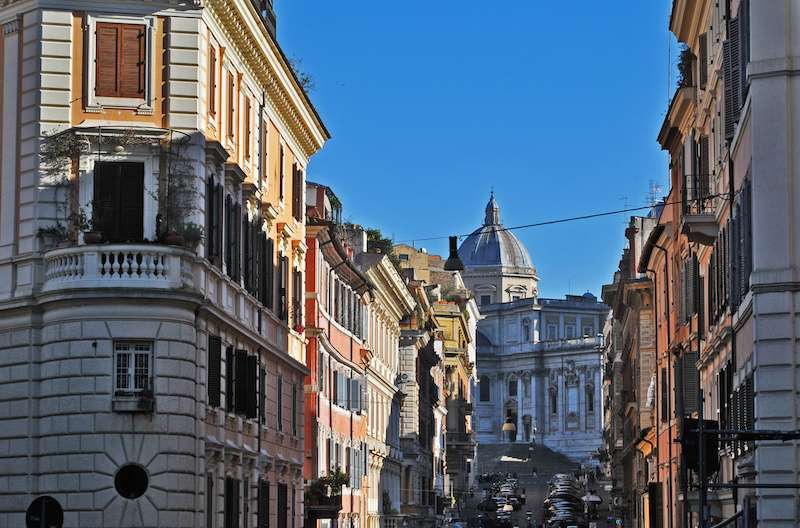Famous the world over for the Colosseum, the Sistine Chapel and Trastevere, Rome is also home to lesser-known neighbourhoods that are now central to the lives of Romans and tourists alike.
If you are in the area for a Colosseum Tour, we surely recommend you a visit to Monti District.
The history of Monti District from ancient Rome until today
The Monti district is the oldest in the city, the name recalls the ‘monti’, i.e. the hills of Rome on which it extends: Viminale, Esquilino and Quirinale (at one time it also included part of the Celio, later detached). The three hills stand out on the district coat of arms, an eternal reminder of the etymology of the name. In Roman times, this area was densely populated. While the upper area was dominated by the domus signorili (noble houses), the lower area was dominated by the Suburra, a plebeian quarter where it was not difficult to come across ill-frequented inns and brothels. It was crossed by an important artery, the Argileto (today Via della Madonna dei Monti and Via Leonina), which connected it to the Roman Forum.
During the Middle Ages many inhabitants abandoned the area because of the difficulties of water supplies. The distance from the Vatican also risked negatively affecting the district’s destiny. Repopulated since the 17th century, the district underwent an important urban development after the establishment of the Kingdom of Italy, while it changed its face again during the Fascist regime. In particular, work to unearth the remains of the Imperial Forum destroyed a large part of the district.
After a bit of history , in this post we want to guide you to discover the Rione Monti, one of the most characteristic and bohemian places in Rome. Thanks to our tips you can wander around the neighbourhood like true locals.
What to visit and where to eat in Monti District
Rione Monti is a gem to be discovered a stone’s throw from the Imperial Forum. What catches the eye is its lively atmosphere and retro charm. Shops and restaurants are scattered in a maze of cobblestone alleys overlooked by ancient palazzi.
It’s worth a visit Santa Maria Maggiore, one of Rome’s four papal basilicas, about the construction of which a legend hovers: on the night of 4 August 358 AD, the Virgin Mary appeared in a dream to Pope Liberius asking him to build a church. The next morning, a midsummer snowfall whitened the Esquiline Hill, indicating where to build the basilica.
For a snack, I recommend a stop at Regoli, a historic pastry shop that is more than 100 years old. All the desserts are delicious, but the famous shortbread tart with custard and strawberries is a must!
Not far away is another institution in the Esquiline district: the ancient Panella bakery, a bit of a bakery, a bit of an emporium and a place for lunches and aperitifs.
Here you can find as many as 70 different types of bread from every region, including those typical of ancient Rome with sultanas and special yeasts.


